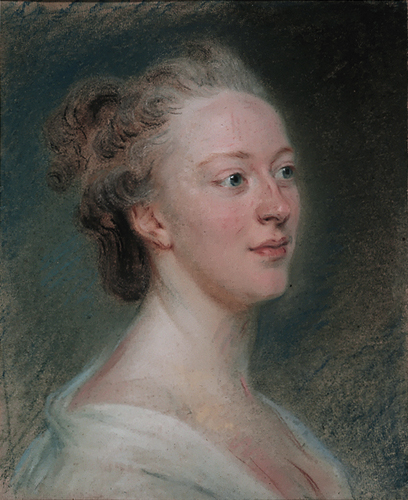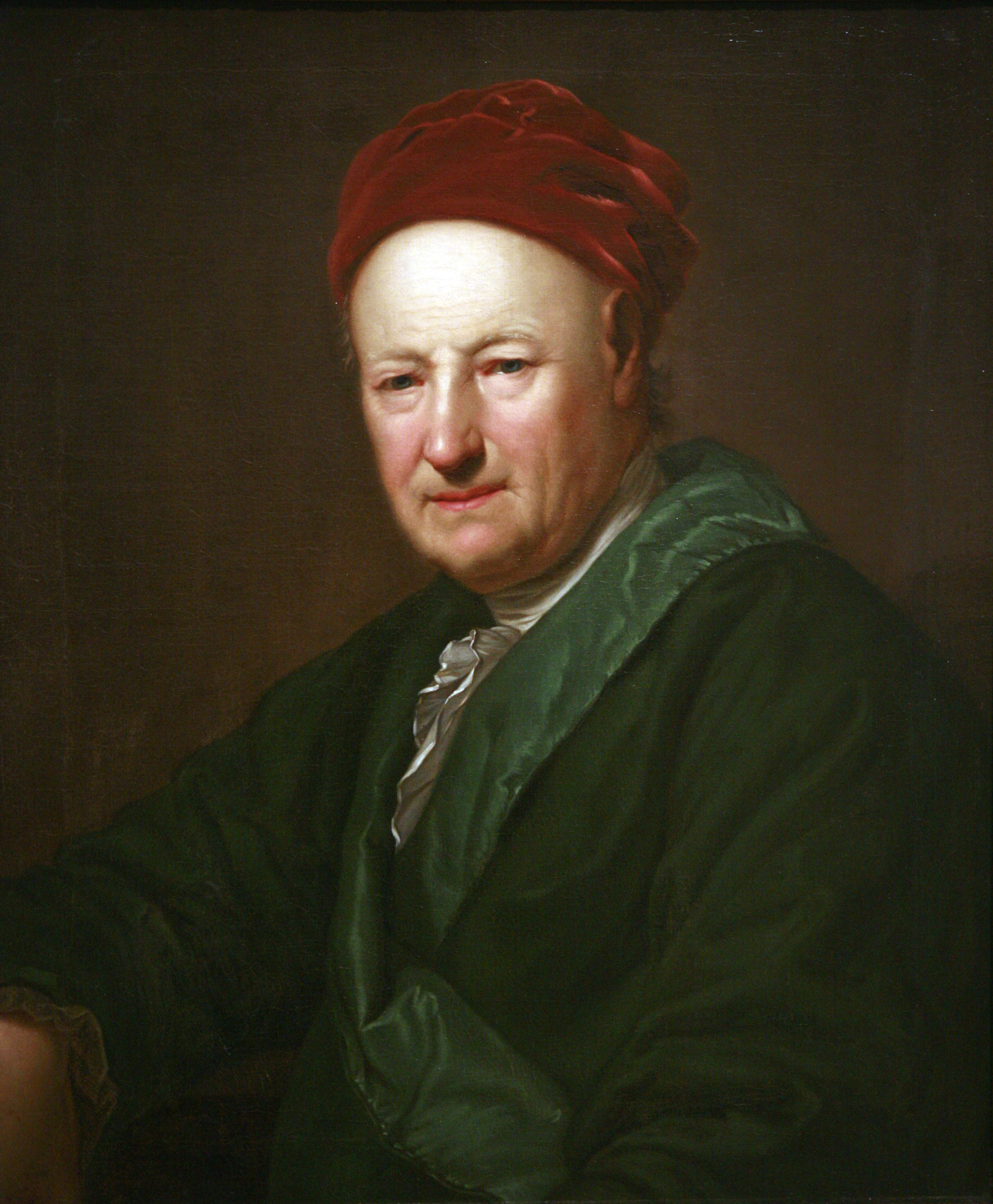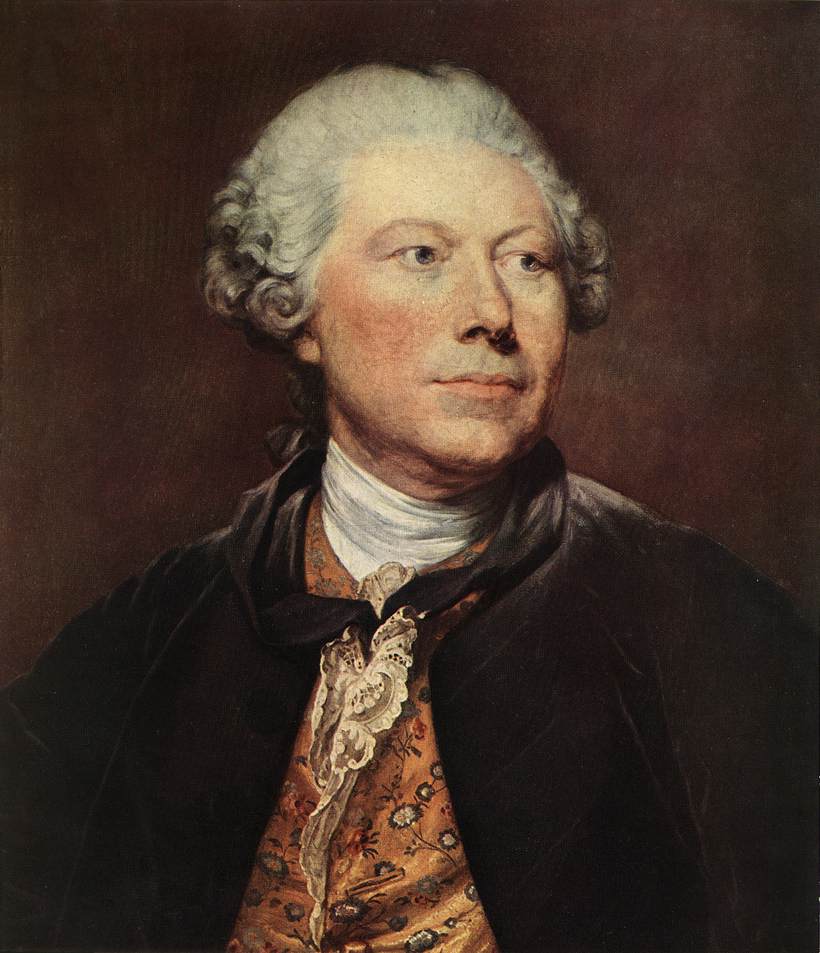|
Ludwig Ferdinand Huber
Ludwig Ferdinand Huber or Louis Ferdinand Huber (1764 – 24 December 1804) was a German translator, diplomat, playwright, literary critic, and journalist. Born in Paris, Huber was the son of the Bavarian-born writer and translator and his French wife Anna Louise, . He grew up bilingual in French and German after his parents moved to Leipzig when he was two years old. He lacked a classical education but read voraciously and was well versed in modern languages, and started publishing translations from French and English at an early age. He also translated plays that were performed in theatres all over Germany. In the early 1780s, Huber became friends with the jurist Christian Gottfried Körner, his fiancée Minna Stock, and her older sister Dora Stock, whom he later promised to marry. Together, the friends wrote in admiration to the poet Friedrich Schiller and successfully managed to invite him to come to Leipzig and later to Dresden, where Huber lived in a house with Schiller. H ... [...More Info...] [...Related Items...] OR: [Wikipedia] [Google] [Baidu] |
Dora Stock
Dora (shortened from Doris or Dorothea) Stock (6 March 1760 – 30 March 1832) was a German artist of the 18th and 19th centuries who specialized in portraiture. She was at the center of a highly cultivated household in which a great number of artists, musicians, and writers were guests; and her friends and acquaintances included some of the most eminent figures of her day, namely Goethe, Schiller and Mozart. Life Childhood She was born in Nürnberg to a copper engraver named Johann Michael Stock (1737–1773). Stock had in 1756 married a widow five years his senior—Maria Helen Endner, née Schwabe (1733–1782)—who already had a son, Georg Gustav, by her previous marriage. Dora was the first of two surviving children born to this marriage; two years later her younger sister Anna Maria Jakobina, called Minna (11 March 1762 – 1843), was born. When Dora was five years old, her father took up a position in Leipzig working as an engraver and illustrator for the Breitkopf prin ... [...More Info...] [...Related Items...] OR: [Wikipedia] [Google] [Baidu] |
Isabelle De Charrière
Isabelle de Charrière (20 October 174027 December 1805), known as Belle van Zuylen in the Netherlands, née Isabella Agneta Elisabeth van Tuyll van Serooskerken, and adameIsabelle de Charrière (married name) elsewhere, was a Dutch and Swiss writer of the Enlightenment who lived the latter half of her life in Colombier, Neuchâtel. She is now best known for her letters and novels, although she also wrote pamphlets, music and plays. She took a keen interest in the society and politics of her age, and her work around the time of the French Revolution is regarded as being of particular interest. Early life Isabelle van Tuyll van Serooskerken was born in Zuylen Castle in Zuilen near Utrecht in the Netherlands, to Diederik Jacob van Tuyll van Serooskerken (1707–1776), and Jacoba Helena de Vicq (1724–1768). She was the eldest of seven children. Her parents were described by the Scots author James Boswell, then a student in law in Utrecht and one of her suitors, as "one ... [...More Info...] [...Related Items...] OR: [Wikipedia] [Google] [Baidu] |
Adam Friedrich Oeser
Adam Friedrich Oeser (17 February 1717 in Pressburg – 18 March 1799 in Leipzig) was a German etcher, painter and sculptor. Biography Oeser worked and studied in Pressburg (student of Georg Raphael Donner in sculpture) and Vienna at the Vienna Academy (student of Jacob van Schuppen and Daniel Grau in painting). He went to Dresden in Saxony in 1739, where he studied with Mengs and Dietrich, and created portraits and scenes for the Royal Opera, and mural paintings in Schloss Hubertusburg (1749). In 1756 Count Heinrich von Bünau commissioned him to decorate the newly built Schloss Dahlen. Oeser moved to Leipzig in 1759. Appointed director of the newly founded Academy there in 1764, he zealously opposed mannerism in art. He was a stout champion of Winckelmann's advocacy of reform on antique lines. He also befriended Winckelmann, who lived with him and his family in 1754/55. Oeser's chief importance was as a teacher. He was the drawing teacher of Johann Wolfgang Goet ... [...More Info...] [...Related Items...] OR: [Wikipedia] [Google] [Baidu] |
Christian Felix Weiße
Christian Felix Weiße (1726–1804) was a German writer and pedagogue. Weiße was among the leading representatives of the Enlightenment in Germany and is regarded as the founder of German children's literature. Life Weiße was born as twin on 28 January 1726 in Annaberg in the Ore Mountains as the son of Christian Heinrich Weiße and his wife, Christian Elisabeth. His father was rector at a Latin school and teacher for oriental and modern European languages. When Weiße was one year old, the family moved to Altenburg, Thuringia, 45 km south of Leipzig, where he then attended the Gymnasium and made his first attempts at writing poetry. His father had died in 1730. His family moved then to Leipzig, where he studied philology and theology from 1745 until 1750 at the University of Leipzig. During this time, he became acquainted with Christian Fürchtegott Gellert, Gotthold Ephraim Lessing, Friederike Caroline Neuber, Gottlieb Rabener and Ewald Christian von Kleist. After ... [...More Info...] [...Related Items...] OR: [Wikipedia] [Google] [Baidu] |
Christian Ludwig Von Hagedorn
Christian Ludwig von Hagedorn (14 February 1712, Hamburg – 24 January 1780, Dresden) was a German art historian and collector, as well as an amateur engraver. He also served as a diplomat. His elder brother, Friedrich, was a well known poet. Biography His father, Hans Statius von Hagedorn, was a diplomat in the service of Denmark. He studied law at the University of Altdorf, but his letters indicate he was already interested in art. He transferred to the University of Jena in 1732. Five years later, he entered the diplomatic service as a legation secretary, and advanced to legation counselor. As he was posted to various German courts, he visited the local art collections and acquired a reputation as a connoisseur. During these trips, he met various art historians and critics, such as Johann Joachim Winckelmann, Johann Georg Sulzer and Salomon Gessner, with whom he maintained a correspondence. Over his fifteen years of service, he also built up a substantial art collection. A ... [...More Info...] [...Related Items...] OR: [Wikipedia] [Google] [Baidu] |
University Of Leipzig
Leipzig University (german: Universität Leipzig), in Leipzig in Saxony, Germany, is one of the world's oldest universities and the second-oldest university (by consecutive years of existence) in Germany. The university was founded on 2 December 1409 by Frederick I, Elector of Saxony and his brother William II, Margrave of Meissen, and originally comprised the four scholastic faculties. Since its inception, the university has engaged in teaching and research for over 600 years without interruption. Famous alumni include Gottfried Wilhelm von Leibniz, Johann Wolfgang von Goethe, Leopold von Ranke, Friedrich Nietzsche, Robert Schumann, Richard Wagner, Tycho Brahe, Georgius Agricola, Angela Merkel and ten Nobel laureates associated with the university. History Founding and development until 1900 The university was modelled on the University of Prague, from which the German-speaking faculty members withdrew to Leipzig after the Jan Hus crisis and the Decree of Kutná H ... [...More Info...] [...Related Items...] OR: [Wikipedia] [Google] [Baidu] |
Johann Georg Wille
Johann Georg Wille, or Jean Georges Wille (5 November 1715, near Biebertal - 5 April 1808, Paris) was a German-born copper engraver, who spent most of his life in France. He also worked as an art dealer. Life and work He was the eldest of seven children born to the miller, Johann Philipp Wille, and his wife, Anna Elisabeth née Zimmermann. He showed an early interest in art; drawing birds and the faces of his classmates. He also copied the illustrations from his father's Bible. Initially, he studied mathematics in Giessen, with the intent of attending a university, but his interest in art prevailed and he began taking lessons from a local portrait painter. This proved to be unsuccessful, so he learned engraving instead and worked for a gunsmith, who taught him how to decorate hunting rifles. In 1736, he began his traditional journeyman years, wandering through Frankfurt am Main, Worms and Straßburg, among many others, on his way to Paris. During his trip, he met the engraver ... [...More Info...] [...Related Items...] OR: [Wikipedia] [Google] [Baidu] |
Salomon Gessner
Salomon Gessner (1730–1788) was a Swiss painter, graphic artist, government official, newspaper publisher and poet; best known in the latter instance for his ''Idylls''. Biography His father, Hans Konrad Gessner (1696–1775), was a printer, publisher, bookseller and member of the High Council of Zürich. From the age of six until his death, he lived in a home his father bought, at Münstergasse 9. He began an apprenticeship in 1749, at a bookshop in Berlin, but stayed for only a year, having decided to devote himself to landscape painting and etching. After a short stay in Hamburg, where he encountered the poetic works of Karl Wilhelm Ramler and Friedrich von Hagedorn, he also developed an interest in poetry. He returned home, without definite plans, but felt uninclined to take part in his father's business. Instead, he joined a group of young men known as ''Dienstags-Compagnie'', that met for discussions and social activities at the homes of their parents (in winter) or at a ... [...More Info...] [...Related Items...] OR: [Wikipedia] [Google] [Baidu] |
Dora Stock - Drawing Of Huber, Crop
Dora may stand for: *Dora (given name) Places United States *Dora, Alabama *Dora, Arkansas *Dora, Missouri *Dora, New Mexico * Dora, Oregon *Dora, Pennsylvania *Mount Dora, Florida Other countries *Lake Dora (Tasmania) *Lake Dora (Western Australia) *Dora, Baghdad, Iraq *Dora, Cyprus *Dora, Lebanon *Dura, Hebron, in the Israeli West Bank *Dorasan or Mount Dora, a hill in South Korea *Dora Beel, a lake in Assam (India) *Dora Baltea river and Dora Riparia river, northern Italy Entertainment * ''Dora the Explorer'', American children's television program * ''Dora and the Lost City of Gold'', a 2019 live-action movie loosely based on the TV program * ''Dora'' (TV series), a 1973 British sitcom series * ''Dora'' (1933 film), a British comedy film * ''Dora'' (2017 film), a Tamil language horror thriller movie * Dora Mavor Moore Award for Canadian professional theatre * "Dora", 1984 song by Ambitious Lovers from the album ''Envy'' * Dora, a designated bonus tile used in Japanese ... [...More Info...] [...Related Items...] OR: [Wikipedia] [Google] [Baidu] |
Göttingen
Göttingen (, , ; nds, Chöttingen) is a college town, university city in Lower Saxony, central Germany, the Capital (political), capital of Göttingen (district), the eponymous district. The River Leine runs through it. At the end of 2019, the population was 118,911. General information The origins of Göttingen lay in a village called ''Gutingi, ''first mentioned in a document in 953 AD. The city was founded northwest of this village, between 1150 and 1200 AD, and adopted its name. In Middle Ages, medieval times the city was a member of the Hanseatic League and hence a wealthy town. Today, Göttingen is famous for its old university (''Georgia Augusta'', or University of Göttingen, "Georg-August-Universität"), which was founded in 1734 (first classes in 1737) and became the most visited university of Europe. In 1837, seven professors protested against the absolute sovereignty of the House of Hanover, kings of Kingdom of Hanover, Hanover; they lost their positions, but be ... [...More Info...] [...Related Items...] OR: [Wikipedia] [Google] [Baidu] |
Electorate Of Bavaria
The Electorate of Bavaria (german: Kurfürstentum Bayern) was an independent hereditary electorate of the Holy Roman Empire from 1623 to 1806, when it was succeeded by the Kingdom of Bavaria. The Wittelsbach dynasty which ruled the Duchy of Bavaria was the younger branch of the family which also ruled the Electorate of the Palatinate. The head of the elder branch was one of the seven prince-electors of the Holy Roman Empire according to the Golden Bull of 1356, but Bavaria was excluded from the electoral dignity. In 1621, the Elector Palatine Frederick V was put under the imperial ban for his role in the Bohemian Revolt against Emperor Ferdinand II, and the electoral dignity and territory of the Upper Palatinate was conferred upon his loyal cousin, Duke Maximilian I of Bavaria. Although the Peace of Westphalia would create a new electoral title for Frederick V's son, with the exception of a brief period during the War of the Spanish Succession, Maximilian's descendants wou ... [...More Info...] [...Related Items...] OR: [Wikipedia] [Google] [Baidu] |
Stuttgart
Stuttgart (; Swabian: ; ) is the capital and largest city of the German state of Baden-Württemberg. It is located on the Neckar river in a fertile valley known as the ''Stuttgarter Kessel'' (Stuttgart Cauldron) and lies an hour from the Swabian Jura and the Black Forest. Stuttgart has a population of 635,911, making it the sixth largest city in Germany. 2.8 million people live in the city's administrative region and 5.3 million people in its metropolitan area, making it the fourth largest metropolitan area in Germany. The city and metropolitan area are consistently ranked among the top 20 European metropolitan areas by GDP; Mercer listed Stuttgart as 21st on its 2015 list of cities by quality of living; innovation agency 2thinknow ranked the city 24th globally out of 442 cities in its Innovation Cities Index; and the Globalization and World Cities Research Network ranked the city as a Beta-status global city in their 2020 survey. Stuttgart was one of the host cities ... [...More Info...] [...Related Items...] OR: [Wikipedia] [Google] [Baidu] |











